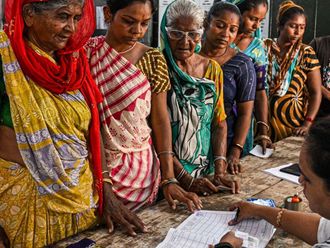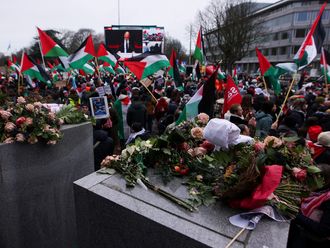Probably through this article, we will be assisting those who are preparing the new edition of the Guinness World Records, in adding a new record.
But our additional information will neither be related to the biggest cake ever baked nor the most expensive yacht. Our addition will be related to the largest embassy in the history.
The embassy of the United States in Baghdad will be our focus. Its location is a top secret. But secrets are made to be discovered, and a project of this size cannot be easily concealed.
Residents around Baghdad have started asking questions about the new forest of giant building cranes within the Green Zone overlooking the River Tigris.
It was soon revealed by a report prepared by a Senate Foreign Relations Committee, which fell in the hands of the media, that three years after the US-led invasion toppled Saddam Hussain only one major US building project in Iraq is on schedule and within budget: the massive new American embassy compound.
The facility is being built in the heavily fortified Green Zone by 900 non-Iraqi foreign workers who are housed nearby and under the supervision of non-Iraqi companies and contractors, according to the Senate Committee report.
Construction material and equipment are stockpiled to avoid the dangers and delays on Iraq's roads. The massive new embassy is designed to be entirely self-sufficient and won't be dependent on Iraq's unreliable public utilities.
The 420,000 sq meters complex will include two office buildings, one of them designed for future use as a school, six apartment buildings, a gym, a pool, a food court and its own power generation and water-treatment plants.
The current US embassy in Iraq employs nearly 1,000 Americans, more than at any other American embassy. Most embassy functions are housed in Saddam Hussain's Republican Palace in the Green Zone.
Fortified area
The cost of the project is estimated at over $1 billion. The designs aren't publicly available, but the Senate report makes it clear that it will be a self-sufficient and fortified area.
Security, overseen by US Marines, will be extraordinary: setbacks and perimeter no-go areas that will be especially deep, structures reinforced to 2.5 times the standard and five high-security entrances, plus an emergency entrance exit.
Despite the fact the embassy is the size of the Vatican, its political role will be much greater. The US ambassador on the other hand will be the Middle East's pope and will carry the commander's stick directing great troops and armies.
The great size of the embassy in itself is an indicator to the central role it will assume in implementing the greater Middle East plan which the US had in mind at the onset of Iraq's invasion.
Several countries have co-existed with US bases, which are situated just on the outskirts of their cities. However, the reality in Iraq is unprecedented since it does not emerge from friendship and partnership between the US and its host.
What is the standpoint of the Democrats concerning this issue? Despite the constant contradictions between the White House and the Democrats, the latter does not discuss the essence of US policy in the Middle East.
For that matter, the Democrats also do not have a standard policy. For instance, we have never heard of a fiery debate in the Congress on the construction of the US embassy in Baghdad. If at all the Democrats oppose the US presence in Iraq, it is because of the forthcoming US presidency elections.
In fact, the 1998 Liberation of Iraq Bill was issued by the Congress during the tenure of president Bill Clinton, a Democrat. It paved the way for the invasion of Iraq and the subsequent US policy in the Middle East.
The Republicans, on the other hand, are more consistent and in harmony with their plans. They believe that interference in the Middle East requires moving the US administration to the hot spot itself, by constructing a new White House on the banks of the River Tigris.
Dr Mohammad Akef Jamal is an Iraqi writer based in Dubai.












